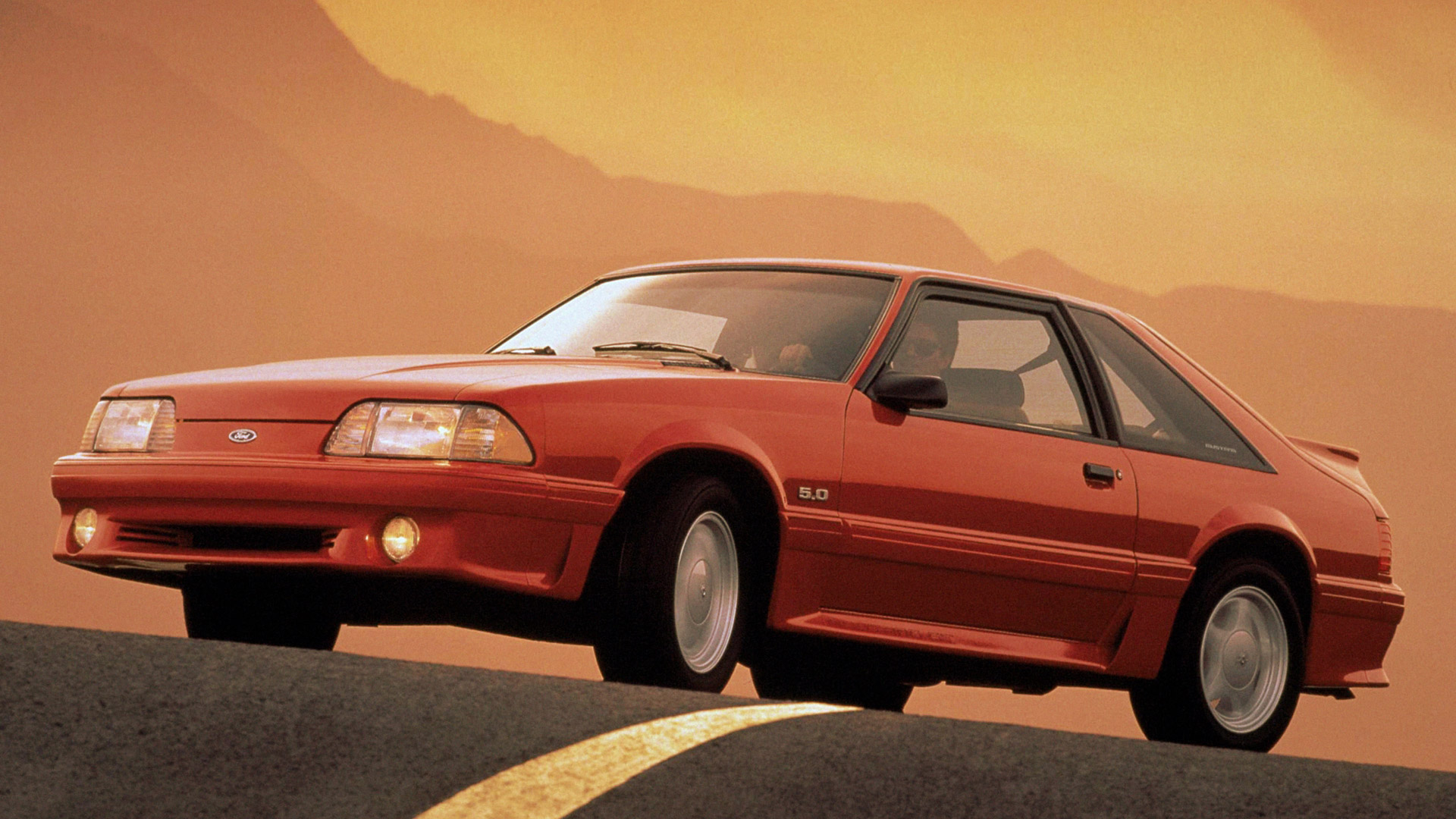1987 Ford Mustang GT
The 1987 Mustang GT received a lot of updates for the 1987 model year. It continued to be the sport upgrade package for those Mustang buyers looking for something more special and powerful than the base Mustang. For the first time the GT model could easily be identified in the Vehicle Identification Number by a P42 for the hatchback or a P45 for the convertible.
The GT was made to be more aggressive than the base Mustang. The front of the mustang received a lower air-dam front valance and a grille-less nose clip and integrated round fog lamps. Air was ingested into the engine compartment through a wide intake that was located between the fog lights. Headlights were covered and there were small scoops added to the front of each wheel well opening in both the front and rear.
Heavily sculpted side skirts with large forward facing non-functional scoops were attached to the side of the car below the body coloured protective moldings. The taillights had a louvered effect and the rear of the hatchback got a large spoiler. New turbine style aluminum wheels were the default wheels on the GT, and the front disc brakes were increased to 10.9 ” to permit better braking.
At the rear the GT was given its own distinctive deep rear bumper and louvered tail lamp covers that were of questionable taste. Hatchback GT’s had their own rear spoiler that differed from the LX and convertibles inexplicably had the same useless luggage rack that was found on the convertible LX’s and really didn’t suit the aggressive character of the GT. Capping off the car was large “MUSTANG GT” lettering molded into the rear bumper cover and side skirts. There was no mistaking this car for anything else other than a Mustang GT!
Inside the GT, Ford gave it all-new instrument and dash panel. Side window de-fog vents, full shut-off Ale vents, pod-mounted switches and smooth semi-gloss texture present a more current look. Frankly, the instrument pod smacks of Japan, but it does place the headlamp, emergency flashers, rear window defroster, and fog lamp controls right at hand. The gauge package is fairly conventional, with fuel, water temp, oil pressure, and charge instruments as standard on the GT.
New door and quarter-panel trim got uprated fabrics, and the armrests are slightly longer than last year’s, lending better support. New seat designs include power lumbar support, concealed thigh-support handle, and new fabrics, as well. The whole interior feels better, and, combined with the new efforts toward noise control, the ’87 Mustang has a greatly elevated feel of quality.
Engine wise, the 5.0L got a bigger throttle body which increased the power to 225 horsepower. Ford’s changes to the electronic engine control module (EEC) and a change from a speed density system, which compared manifold pressure, vacuum and barometric pressure to the simpler and very accurate mass airflow system which calculated the airflow entering the engine as it passed over a heated wire. Ford also got rid of the emissions friendly high swirl heads for higher compression and better performing heads, increased the throttle body size for better breathing and reworked the exhaust system. The 5.0 liter engine saw low-end torque improve with these changes.
Axle wise, the rear stabilizer bar was increased to .82 inches but the gear ratios were still 2.73:1 on the 5 speed and 3.08:1 for automatics. The changes combined with the engine improvements helped the overall driveability of the powerplant as well.





